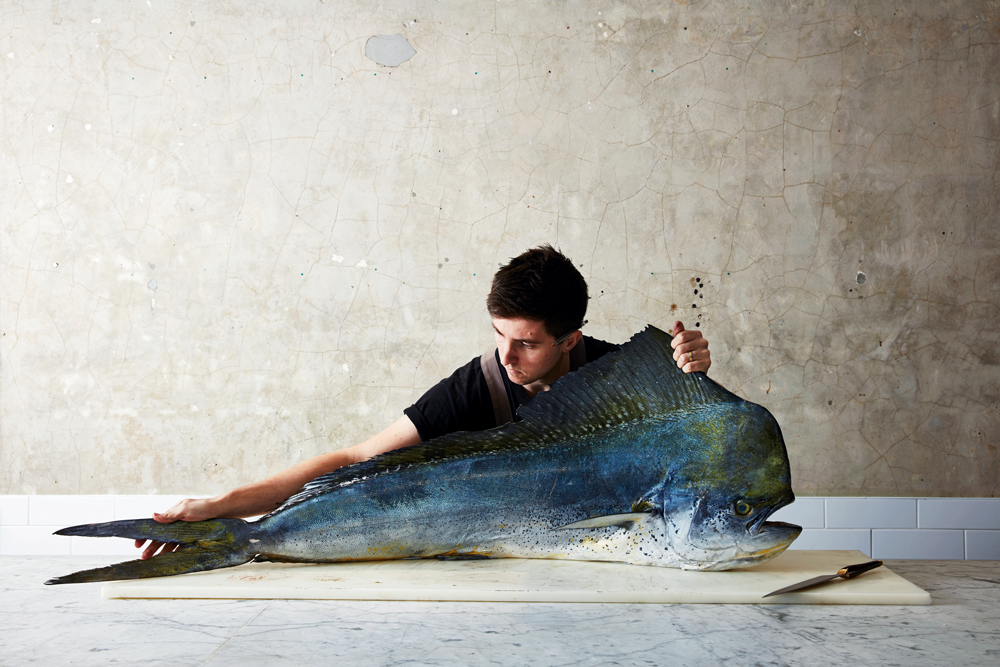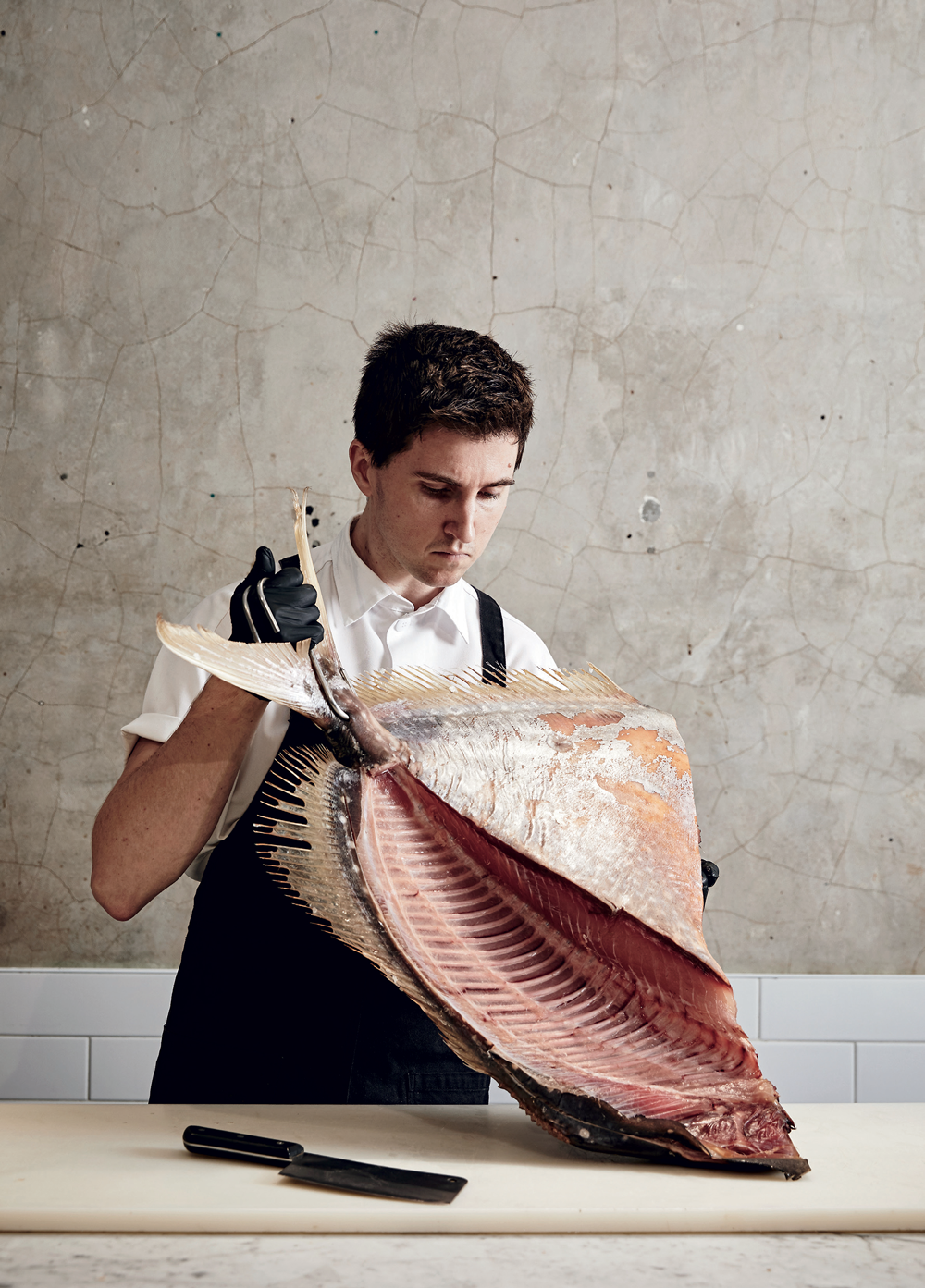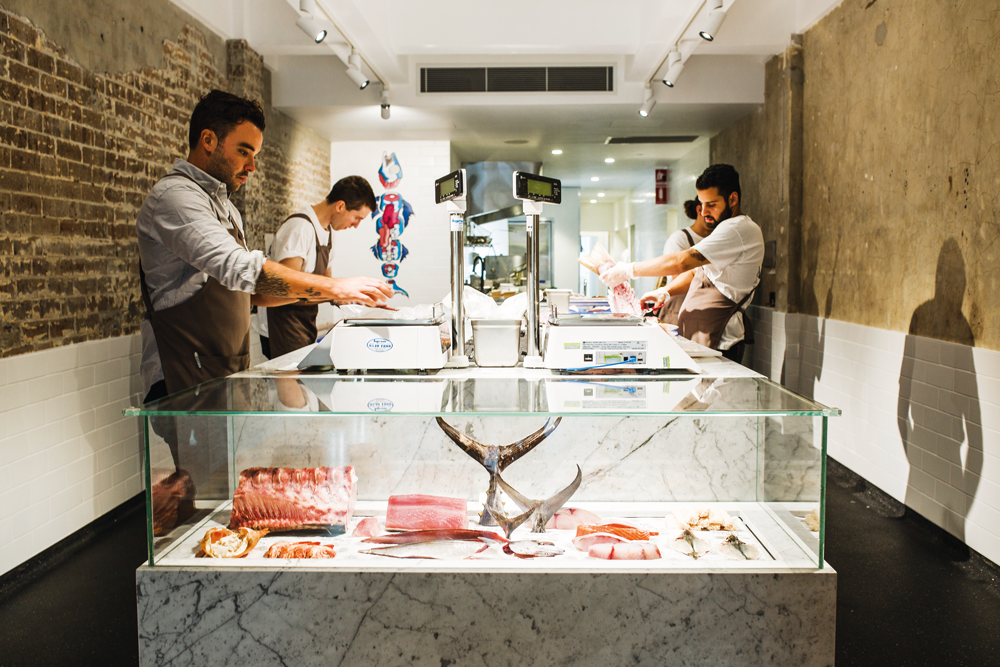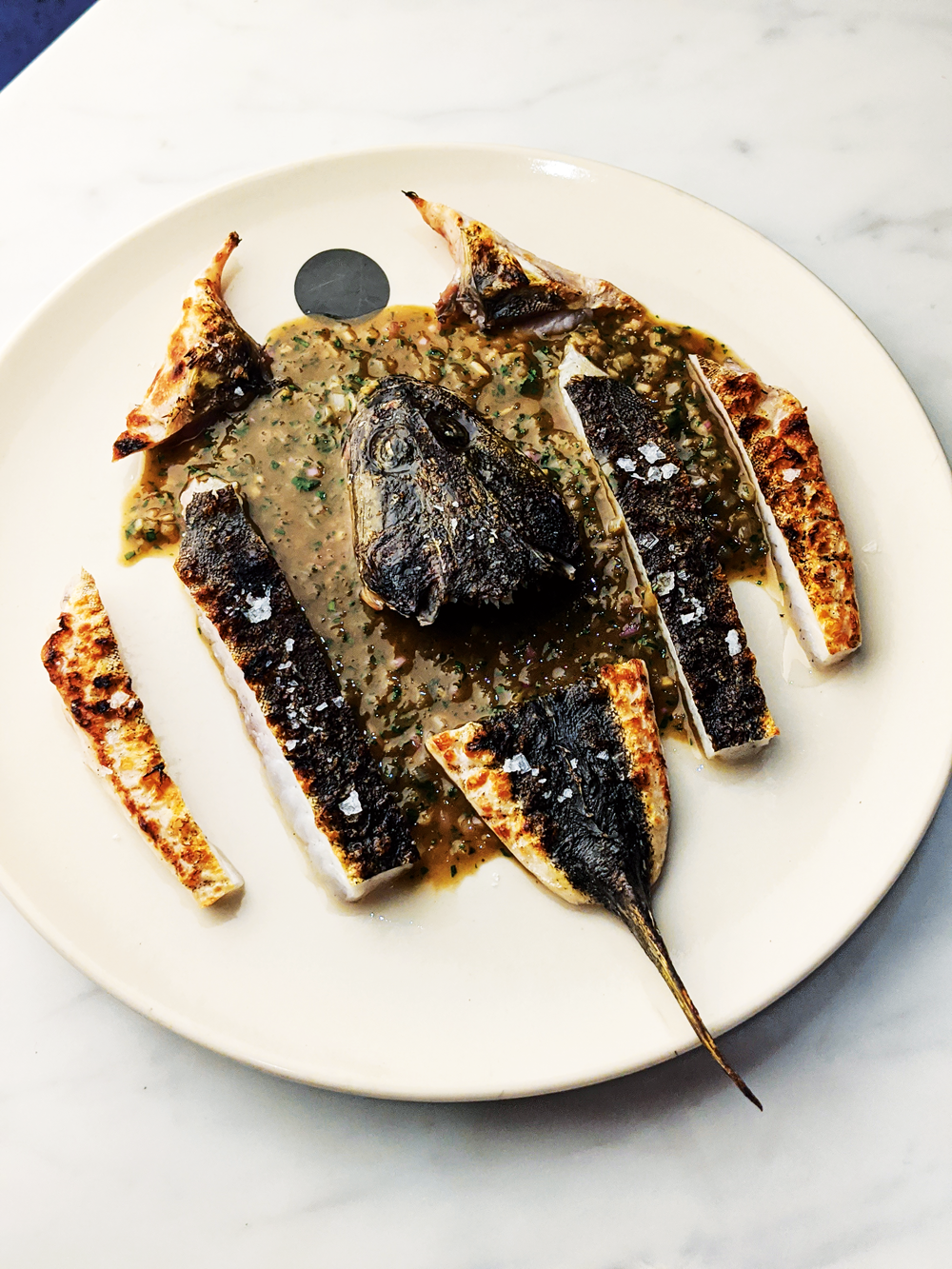Chef Josh Niland charts his own path in redefining how fish should be enjoyed nose to tail and by introducing new flavour profiles from dry ageing.

Chef Josh Niland believes strongly in dry ageing fish. Yes, that’s right. Get ready to change your misconceptions about fresh fish. He also believes in utilising the whole fish for nose-to-tail eating. His dedication to minimising wastage and passion in creating innovative fish dishes that are totally unexpected have won him the respect and recognition of fellow chefs, marine experts, seafood companies and fish mongers.
His globally recognised restaurant Saint Peter, located in Paddington, Sydney churns up the waves for its all-consuming approach to serving fish parts and making it classy on a plate. Following its success, he opened Fish Butchery, a unique retail shop with a temperature-controlled ice-free zone where line-caught sustainable species of fish are dry handled and cut to order. His approach in treating fish like meat have broken down barriers on how they should be handled and cooked.
Epicure speaks to Chef Niland to find out more about his passion for sustainable fish farming, ground-breaking ideas and alternative culinary approaches that have set him apart from his peers.
What is the most important issue to address on the topic of sustainable seafood right now?
The most important issue I feel is wastage. It is so disappointing to still see fish going to waste. Whether it’s too much being caught or it being carelessly prepared; inevitably shortening its shelf life and being wasted before it is purchased or consumed. Too frequently in the Western world, we are only seeking out the two fillets and nothing more. This accounts for only 50% of what is eaten.
How does your sustainable approach define a new way of handling seafood and your culinary approach?
I feel my culinary approach is the approach shared by a large collection of chefs both here in Australia and abroad. If you decide to remove something from the environment in which it was growing, then you personally have the responsibility to use as close as possible to 100% of that item, be it a carrot, a pig or a fish.
My way of handling seafood is to celebrate the whole fish. Creativity has been born out of necessity. Once the item comes through the doors we have the responsibility as a team at the restaurant to utilise every part.

What inspired the contentiously named “Fish Butchery” and why is it one-of-a-kind?
Meat butchery in recent years has been made to be quite glamorous and boutique to bring a sense of luxury to a relatively expensive ingredient. However fish shops, with a handful of exceptions, have remained relatively wet, cold, smelly and not overly pleasant to interact with.
Bringing a touch of meat butchery boutique to fish shops allows customers to interact with fish in a different way. To be able to request fish cut from the bone in a specific way to order; to discover fish that has been aged to develop flavour and texture; to interact with staff and to gain greater insight into the fish’s provenance and methods of cookery for best results is something you don’t typically find.
Fish Butchery is unique in that we showcase one portion of each individual species in a temperature-controlled glass box, which allows us to remove the direct ice contact so synonymous with fish displays.
Share with us your thought process on pioneering the dry ageing of fish.
Much like ageing beef, the ageing process for fish requires the same controlled environment where the temperature and humidity levels are carefully monitored. Dry ageing fish in a controlled environment allows you to heighten or promote certain nuances in a fish’s flavour profile. Moisture removal is key to harnessing those flavours.
Dry ageing enhances both taste and consistency by reducing moisture and breaking down the enzymes within the animal protein. Flavour molecules such as glutamate and insulate are released, heightening complexity and umami. The breakdown of protein composition also tenderises the fish, making raw seafood easier to digest. If you can find the sweet spot of the right amount of moisture matched with the natural oils of the fish, it is a wonderful experience to cook and to eat.
There are so many different flavour profiles that can be offered from different fishes. I just don’t believe that we’ve been able to harness or articulate what those flavours are because of this belief that ‘fresh is best’. If you’re eating a fish that’s literally just out of the water, how are you able to taste that fish when it just tastes like neutral protein. It’s like eating a fresh piece of cow or a fresh piece of pork; it doesn’t have a huge amount of flavour. Some people like that, and that’s great, but I kind of like the flavour that you get after 30 days of ageing, like a cut of beef, so that you can activate some of the savoury qualities, for example, the glutamic acid in the meat so that you get the umami savouriness.

Saint Peter has created quite a global stir. What culinary surprises have you served up and how creative do you get?
We have served everything from fish fat caramel macarons to fish eye chips, dry-aged fish, fish rib eyes, chops & saddles (fish seen & butchered as an animal) sea urchin crumpets, fish sperm mortadella and a whole list of fish charcuterie such as fish sausages that look and taste like pork sausages; yellowfin tuna prosciutto that looks like a leg of ham; and swordfish bacon that can be mistaken for pork bacon.
Being creative has really been borne out of logic; I ask myself: “Can I cut a ribeye from a fish? Yes, I can. Do those little fish bones look really good if I polished them and make them look like a lamb rack? Yes, I can. And instead of thinking about the garnishes that go with fish, I think about how that mahi-mahi looks like a lamb rack, and ask myself what can I use with a lamb and would that work with mahi-mahi. That’s how my thought process unravels.
I feel our food at Saint Peter is perceived as being very simple and generous (or I hope it is). We apply broad thinking from different genres of cooking to the fish world, be it meat butchery, Chinese methods of cooking, French sauce making or Australian and English baking. Nothing is off limits and everything should be considered when trying to make fish seen as being as desirable, if not more so, than other proteins. One of the ways is by referencing food ingredients that people are comfortable with and to use that as the draw to introduce a challenging part of the fish that people are not used to. Fish sperm, fish stomach, and fish eyeballs aren’t going to tickle everyone’s palate, so I make it as texturally comfortable as I can for people to try it, for example, turning fish eyeballs into chips was a big hit with diners.
What’s the Saint Peter hook in keeping diners fascinated with fish?
With the restaurant reopening after the lock-down, I have a sense of wanting to strip back everything on my menu and to really let the fish shine with its quality and taste. I am inspired by the Hong Kong restaurants that serve roasted goose, where you know you are going to sit down to enjoy the best meat, served simply with just some condiments on the side. I love the aesthetic appeal of how the meat is uniformly cut and presented on the plate. Similarly, I want to serve beautiful coral trout that’s been line caught and aged for eight to 10 days, with skin that’s like pork, and serve that with a delicious condiment on the side. And my diners will enjoy their dishes sitting right in front of the chefs observing every detail of our preparation and knowing the story behind the fish that is served.
